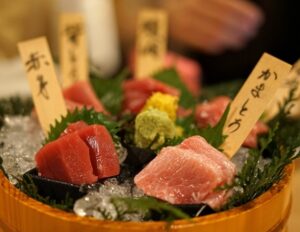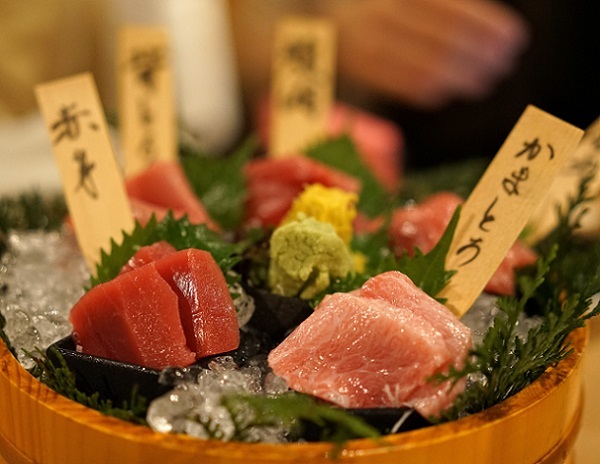Explore the Delectable World of Tuna: Otoro, Chutoro, and Akami

Dive into the fascinating world of Japanese tuna cuisine, featuring otoro, chutoro, and akami. Uncover the flavors, textures, and best uses of these delectable cuts in sushi and sashimi dishes, as well as the factors that impact their pricing.
A Comprehensive Guide to Tuna Sushi and Sashimi
Tuna, a versatile saltwater fish from the mackerel family, is widely enjoyed in various cuisines worldwide. While it is often used in American classics such as tuna salad and casserole, in Japanese cuisine, tuna takes on a whole new dimension, especially when served raw in sushi or sashimi.
This article will dive into the different parts of the tuna fish you can try – otoro, chutoro, and akami – and the best uses for each. Additionally, we will discuss the pricing of various tuna cuts based on their origin and preparation.
Otoro: The Rich and Decadent Choice
Otoro is the most desirable part of the tuna fish, taken from the inside of the fish’s belly.
Due to its high fat content, it melts in your mouth, offering a sweeter taste to sashimi. Its rich and sought-after nature makes otoro more expensive than other parts of the fish, but it is certainly worth every penny.
Chutoro: The Perfect Blend
Chutoro is an ideal combination of otoro and akami, providing both a meaty and fatty texture for a truly delightful experience.
As chutoro makes up such a small amount of the fish, it takes an entire tuna to create one chutoro sashimi, making it quite a delicacy.
Akami: The Meaty Staple
Akami is the most common and frequently-used part of the fish, known for its meaty and red appearance.
It is often found atop rice in sashimi or used in a sushi roll. Its widespread availability makes it more affordable than chutoro or otoro.
Tuna Pricing: Factors to Consider
The cost of tuna varies depending on the cut, whether it is ocean-caught or farm-raised, and if it has been frozen. For example, a 100-gram cut of ocean-caught northern bluefin tuna from the renowned Oma brand can reach up to 2,500 yen, while the same cut from a tuna caught overseas may cost up to 1,900 yen.
On the other hand, farmed tuna is generally the most affordable, with a 100-gram cut of northern bluefin tuna from a Japanese fish farm costing up to 1,200 yen.
Experience Japan’s Tuna Delights
With a variety of taste and texture experiences on offer, there is something for everyone when it comes to Japanese tuna cuisine. From the rich and decadent otoro to the meaty akami, you are sure to find something you like. Challenge yourself to sample an assortment of tuna cuts and dishes to make the most of this delectable fish.
Keep in mind that the prices mentioned in this article are rough estimates, and there may be changes in merchandise, services, and prices since the time of writing.

